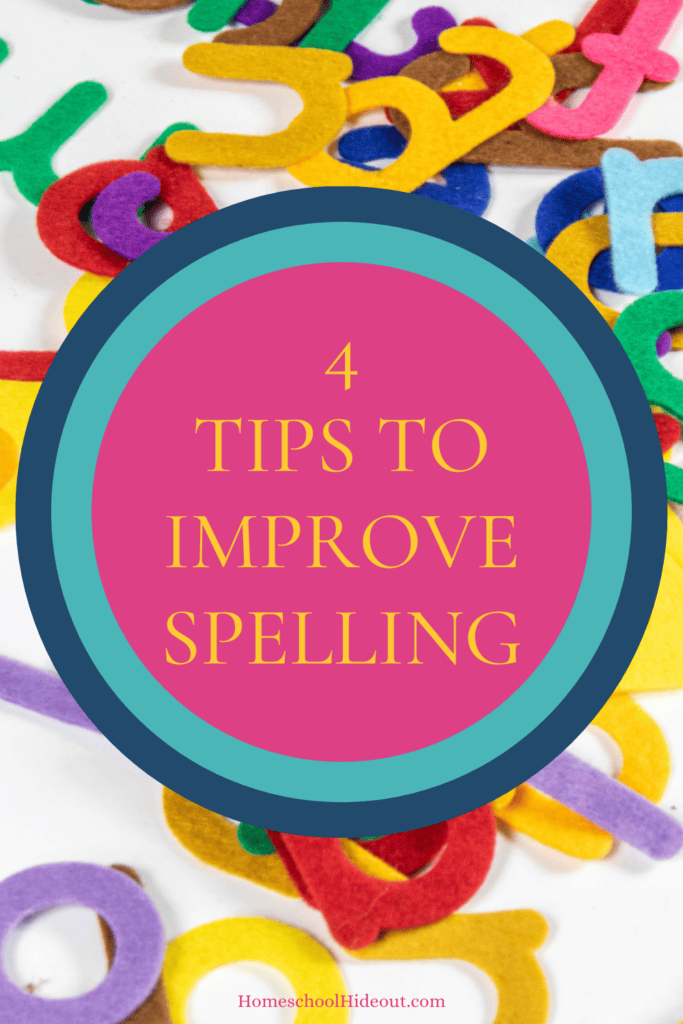4 Tips to Improve Spelling
Sadly, many children struggle with spelling. English word formation can be particularly difficult because a youngster needs to grasp many word families and spelling rules to create a grammatically correct sentence. Unfortunately, if neglected, poor spelling habits will follow children their entire lives, ruining their ability to write well. The following tips can help you to help a child who is struggling with spelling to get back on track in developing the abilities required to spell correctly and write well.
4 Tips to Improve Spelling
Sight Words
Writing and reading are interconnected. Most teachers agree that proficient readers also make excellent writers. As a result of simple exposure to and interaction with language in print, learning to read, and reading frequently, aids children in learning to spell and write.
Sight words, or the Dolch list, is a collection of words that make up 50–75% of the text in children’s books and educational materials and this is where many of the first spelling words originate from. The goal of learning sight words is to help children quickly identify familiar words. Mastering these words’ recognition and spelling helps children concentrate on more challenging and infrequent words while reading and writing. If you are helping a child who struggles with spelling, it is important that the words are developmentally suited to the child’s current ability, not their age, when selecting both sight words and spelling lists.
Break It Down
Breaking a big word into smaller, more manageable word components that the child can spell is the simplest approach to teaching them how to spell. The words can first be divided into syllables so that the letters in each syllable can be figured out, and then rejoined. You may need to go back to the beginning and re-introduce phonics worksheets. Here, children are taught to break words down into phonograms. A phonogram is a single letter or group of characters that symbolize a typical sound. Children learn that frequent letter combinations are utilized in many words by breaking them down into phonograms.
Make It Fun
It could be boring for a child (especially one who struggles with spelling) to sit down and memorize their spelling. Spelling lessons would not be high on their list of enjoyable activities since they would rather do something else. You can teach children spelling while they go about their daily lives, including eating meals, to ensure they like learning. You could ask the child to spell a certain word before taking a bite of their snack or food. In this way, the child may be distracted from learning while also finishing what is on their plate. Additionally, you might occasionally reward them with their favorite dish for improving their spelling. You could also use Word Unscrambler as a teaching tool for spelling. This can help children who struggle with spelling to expand their vocabulary.
One of the best ways to teach the spelling of a word is to make a song out of it. In fact, interestingly, children who compete in spelling bees often employ this strategy to great effect. Use a well-known tune or make up your own. You should sing the song aloud to the child several times so that it becomes ingrained in their memory. The song should comprise the letters of the word. Even if the child forgets the spelling, they will recall the word’s rhythm and the letters in accordance with it.
Remember the Rules
You may need to reinforce basic spelling principles: the ones that make you look at a word and know it “just doesn’t look right”. Songs and mnemonic devices (like “I before E, except after C”) aid in reinforcing the memory of these fundamental principles. The basic memorization of these principles as well as the application of the rules they have learnt may be what is needed to get them on track with spelling.
Use these tips to help a child who is struggling with spelling.







